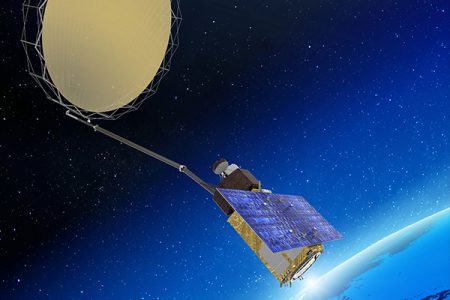 Thales Alenia Space has announced that it has signed a 93 Meuro, the first tranche of the 495 Meuro global contract, with the European Space Agency (ESA) to build the Copernicus Imaging Microwave Radiometer (CIMR) environmental monitoring satellites.
Thales Alenia Space has announced that it has signed a 93 Meuro, the first tranche of the 495 Meuro global contract, with the European Space Agency (ESA) to build the Copernicus Imaging Microwave Radiometer (CIMR) environmental monitoring satellites.
The CIMR mission is part of the expansion of the Copernicus Space Component programme of the ESA, in partnership with the European Commission. The European Copernicus flagship programme provides earth observation and in situ data and a broad range of services for environmental monitoring and protection, climate monitoring, natural disaster assessment to improve the quality of life of European citizens.
Thales Alenia Space will serve as mission prime with main partners OHB Italia for the instrument and HPS (High-Performance Space Structure System GmbH) for the Antenna Reflector. This mission is dedicated to providing observations of sea-surface temperature (SST), sea-ice concentration (SIC) and sea-surface salinity (SSS).
It would also observe a wide range of other sea-ice parameters as sea ice thickness (SIT), sea ice drift (SID), ice type/stage, snow depth on sea ice or ice surface temperature (IST).
CIMR responds to high-priority requirements from key Arctic user communities and will improve continuity of missions monitoring the polar regions, notably in terms of spatial resolution (~5 km) temporal resolution (sub-daily) and geophysical accuracy.
The CIMR system consists of up to three satellites dedicated to day-and-night monitoring of land, ice and oceans flying in loose convoy with METOP SG satellite B.
CIMR orbit is quasi-polar, near-circular and sun-synchronous. In order to acquire measurements on a wide swath, the instrument rotates continuously about an axis parallel to the local spacecraft vertical.
The antenna system views the earth scene with a nearly constant incidence angle of about 55.5 degrees. The CIMR satellites embark each a wide-swath conically-scanning multi-frequency microwave radiometer provided by OHB Italia and operating from L to Ka-Band enabling radiometric measurements with unprecedented levels of accuracy.
CIMR will be designed for a seven years nominal lifetime with a sub-daily Arctic and Antarctic area coverage. It will be compatible with Vega-C and Ariane 6-2 launchers and will be fitted by a controlled re-entry system.
This programme will take both advantages of Thales Alenia Space proved heritage in Copernicus missions, earth observation satellites as well as the OHB Italia experience on rotating microwave imager. The platform is based on the new Thales Alenia Space Multi-Mission Platform product line (MILA), and the Large Deployable Reflector (LDRS) will be provided by the German company HPS.
Massimo Comparini, Senior Executive VP Observation, Exploration and Navigation at Thales Alenia Space said: “We are proud to lead this crucial mission for Europe and for arctic communities, as CIMR will provide operational sea-ice services and continuously monitoring of Arctic environment.”
Hervé Derrey, CEO of Thales Alenia Space said: “Our strong expertise and heritage on both Copernicus programmes and radar technologies will serve this mission which is considered essential to the successful implementation of the integrated EU Arctic policy.”












Add Comment